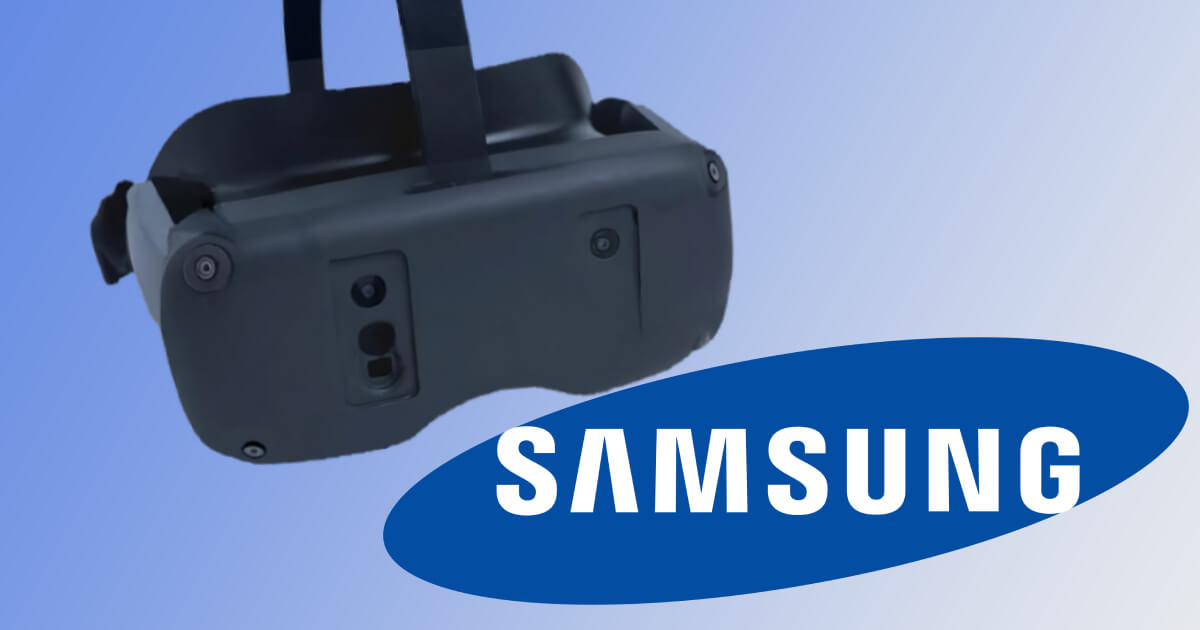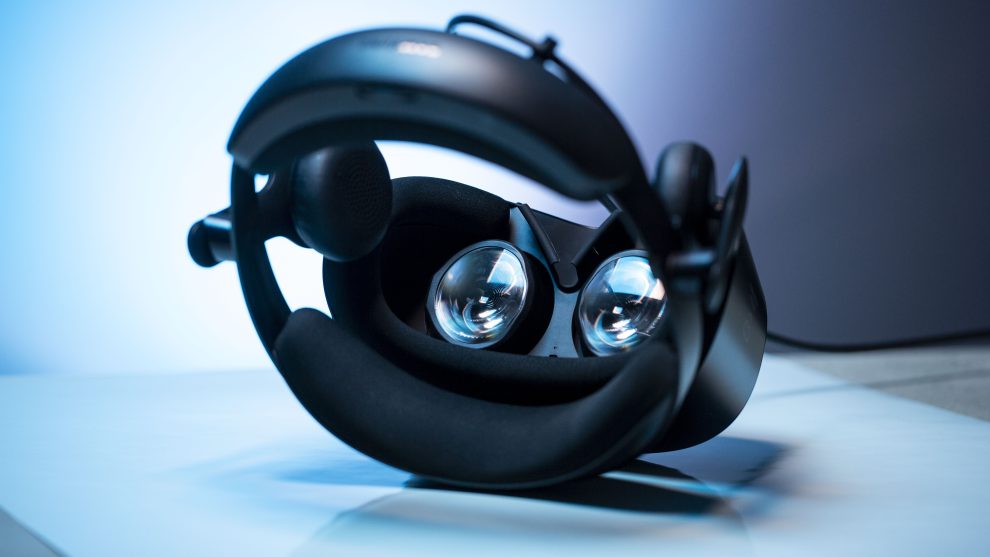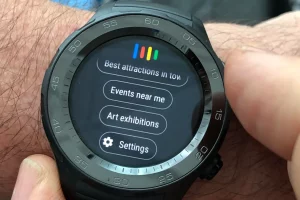Qualcomm recently announced their new Snapdragon XR2+ Gen 2 chip, which is set to power the next generation of immersive extended reality (XR) devices. This includes Samsung’s highly anticipated upcoming mixed reality (MR) headset.
While details remain scarce on Samsung’s next XR offering, the capabilities of the Snapdragon XR2+ Gen 2 provide some tantalizing clues into what we can expect. From advanced processing power to innovative eye tracking, let’s break down the key features and explore how they will shape the future of MR.
Processing Powerhouse: The Snapdragon XR2+ Gen 2
The Snapdragon XR2+ Gen 2 delivers a massive 50% increase in CPU performance and 60% faster graphics rendering compared to its predecessor. This quantum leap in processing muscle empowers next-gen XR devices to render incredibly detailed virtual environments without lag or visual artifacts.
For MR headsets, this level of performance is critical to seamlessly blending computer-generated elements into the real world. The heavy computational workload required for spatial mapping and occlusion in MR demands maximum efficiency. The XR2+ Gen 2 gives Samsung’s new headset the horsepower necessary to make MR experiences feel truly magical.
Faster Performance Unlocks New Possibilities
The speed boost from the new Snapdragon platform directly translates to more advanced and visually stunning MR functionality. For example, real-time environment scanning and reconstruction can now occur quickly and accurately enough to enable persistent real-world alignment.
This could allow virtual companions to follow the user from room to room or make holographic video calls where the remote person is positionally anchored to the real space. Faster processing opens the door for MR that feels less like a tech demo and more like the metaverse sci-fi dreams are made of.

Eye Tracking Changes the Game
While the XR2+ Gen 2’s sheer performance is impressive, one of its most exciting capabilities is integrated eye tracking. This allows MR headsets to follow the user’s gaze in real-time, enabling radical new modes of interaction.
Intuitive Controls via Eye Gaze
Eye tracking paves the way for foveated rendering, where the headset intelligently allocates processing power to where you’re actively looking. This approach can save energy and improve visual accuracy in your central field of view.
More importantly, tracking your eyes means you can directly control the MR interface with your gaze. Want to select a holographic menu item? Just look at it for a moment. See an object you want to interact with? Stare to grab it with a context-sensitive command.
Personalized Experiences
Your eyes also provide a window into your thoughts and emotional state. Samsung’s new MR headset could use eye tracking data to measure your engagement with content and customize what you see accordingly.
If you’re bored, it may spice things up. If you’re overwhelmed, it may simplify the experience by decluttering menus and controls. This lays the foundation for MR that responds to you like a helpful assistant rather than cold, impersonal technology.
Sharper Images with High Resolution Displays
While the exact display specifications remain unconfirmed, the reference Snapdragon XR2+ Gen 2 headset design boasts up to 3K horizontal resolution per eye. This means images and text may appear up to 3 times more detailed compared to many existing MR and VR products.
Crisper Virtual Visuals
Higher per-eye resolution directly improves clarity, with individual pixels becoming imperceptible. Samsung’s new headset will be able to replicate intricate real-world details more accurately, making virtual objects like windows and screens incredibly convincing when merged into actual environments.
Readability Removes Barriers
For real-world applications of MR spanning from medical to industrial uses, text legibility is extremely important and enables critical workflows. The jump to 3K resolution matches what many AR headsets offer and should make reading text nearly as comfortable as on a monitor.
The enhanced clarity paves the way for MR headsets to integrate more seamlessly into professional settings without usability or ergonomics suffering.

OLED Displays Enhance Image Quality
While yet to be confirmed, there is a strong chance Samsung’s next-gen headset utilizes their industry-renowned OLED technology. Compared to standard LCDs, OLED panels offer key visual benefits ideal for MR.
Deep Blacks Increase Immersion
OLED pixels can achieve perfect black levels by fully deactivating. This becomes especially important in MR for accurately representing shadows and darkness to embed virtual objects naturally in the real visual environment.
Faster Response Times Reduce Motion Blur
With response times up to 100 times quicker than LCD, OLED panels feature far less motion blur. As you quickly look around the virtual world, images will remain crisp and easy to interpret. This enhances immersion and reduces eye strain.
XR Ecosystem Heats Up with Apple and Meta
Samsung isn’t the only tech giant investing heavily into XR. Both Apple and Meta are ramping up development of their own next-generation devices to win big in this emerging space. The competition is fierce to own the future of computing beyond phones and screens.
Apple’s Secretive Headset Aims High
Apple is going full steam ahead on their first major new product category since the Apple Watch. While details remain tightly guarded, rumors suggest an incredibly advanced and expensive AR/MR solution focused on communication, productivity, and interaction.
This positions it more as an iPhone companion than mass-market metaverse enabler. But Apple’s user experience track record indicates it may set new precedents for natural interface design.
Meta Quest Pro Targets Enterprise
After pivoting their company to focus squarely on the metaverse, Meta is set to launch the Quest Pro headset later this year. Allegedly packing features like mixed reality, eye tracking, and self-tracking controllers, it aims directly for enterprise productivity.
This represents a new tier above existing Quest hardware, built to prove the technology’s readiness to revolutionize work. While more business-centric than consumer entertainment focused, Meta’s MR play still pushes the envelope.
Beyond Gaming: MR’s Bright Future
To date, most XR devices target gaming, positioning themselves as accessories to power entertainment. But MR technology holds tremendous disruptive potential across practically every industry far beyond these beginnings.
A New Computing Platform
Conceptually, MR represents the next evolution of mainstream computing. Transitioning from rooms full of mainframe computers to desktop PCs to ubiquitous mobile phones, MR offers the first true wearable computer capable of filtering and enhancing our entire perception of reality.
As hardware miniaturization and software maturity enable sleeker form factors and continuous operation, MR headsets stand to become integral tools rather than niche gadgets. They access more human senses like sight, sound, motion and soon touch to liberate users from screens and grant unprecedented control over personal reality.
Transforming How We Work and Play
XR promises to revolutionize sectors from engineering and design to remote collaboration, training, healthcare, manufacturing, construction, marketing, education and entertainment. The applications are nearly endless.
MR liberates teams from physical proximity, allowing hybrid workflows that merge virtual capabilities with specialized real-world equipment. Surgeons can overlay cadaver anatomy using MR for improved outcomes. Engineers visualize full-scale buildings on-site early in the design process. And congregations can come together in inspiring virtual spaces.
As the technology evolves, our digitally expanded reality may soon become ordinary. Samsung’s upcoming device serves as an exciting milestone along the path to widespread MR adoption.
The Future is Mixed Reality
Thanks to the focused efforts of Qualcomm, Samsung, Apple, Meta and others, MR is reaching an inflection point. Momentum continues accelerating toward thinner headsets offering compelling new ways to engage with the world.
While early mixed reality struggled with narrow use cases, technical constraints, and affordability concerns, rapid hardware improvements are overcoming these barriers. 5G connectivity and AI also boost capabilities for tasks like persistent environment mapping and real-time occlusion.
As components mature to fit into regular eyeglasses, MR may eventually fade into the background as an invisible extension of our abilities rather than novelty gadget. An exciting future lies ahead.
















Add Comment